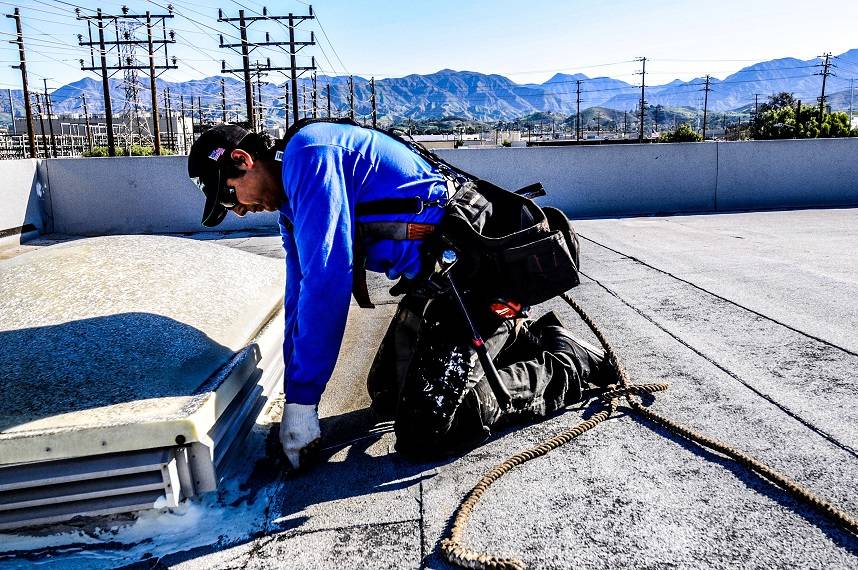Welcome to a journey through the eco-friendly world of cool roof coatings! In this article, we’ll dive deep into how these innovative solutions are not just about keeping buildings cool, but also about making a positive impact on our planet. Buckle up for a ride filled with insights, facts, and a touch of environmental enthusiasm as we explore the five key ways cool roof coatings contribute to a greener future.
So, let’s embark on this adventure together and discover the environmental superheroes that are cool roof coatings!
Introduction to Cool Roof Coatings
Cool roof coatings offer a multitude of environmental benefits that extend beyond their primary purpose of keeping buildings cool. By reflecting sunlight and reducing heat absorption, these coatings contribute to energy savings, mitigate the urban heat island effect, and help curb greenhouse gas emissions. Additionally, they enhance roof durability, conserve water, and support sustainable building practices.
1. Energy savings:
Cool roof coatings are designed to reflect a significant portion of the sun’s heat, reducing the amount of heat transferred into the building. As a result, buildings with cool roofs require less energy for cooling, especially during hot days. By reducing the need for air conditioning, cool roofs help lower electricity consumption, which in turn reduces greenhouse gas emissions associated with power generation.
2. Reduced Urban Heat Island Effect:
The urban heat island effect occurs when cities and urban areas become significantly hotter than their surrounding rural areas due to the abundance of concrete, asphalt, and other heat-absorbing surfaces. Cool roof coatings help mitigate this effect by reflecting solar radiation and reducing surface temperatures. This can lead to cooler microclimates, improving comfort levels and air quality in urban areas.
3. Decreased air pollution and greenhouse gas emissions:
By reducing energy consumption for cooling, cool roof coatings indirectly contribute to reducing air pollutants and greenhouse gas emissions. Power generation from fossil fuels is a significant source of air pollution and carbon dioxide emissions. When buildings consume less energy, power plants can operate at lower capacities or use cleaner energy sources, resulting in fewer emissions.
4. Enhanced roof durability:
Cool roof coatings can extend the lifespan of roofs by reducing the amount of thermal stress they endure. By reflecting sunlight and reducing heat absorption, cool roofs experience less expansion and contraction, which causes roof materials to degrade over time. Prolonging the life of roofs reduces the need for premature roof replacements, and decreases waste from discarded roofing materials.
5. Water conservation:
Cool roof coatings have large pores that retain water, and then slowly drain it away from the roof surface by using a low and gravity. This can alleviate stress on stormwater systems, prevent water pollution, and contribute to water conservation efforts.
Conclusion
Cool roof coatings have emerged as a powerful tool in the fight against climate change and the pursuit of sustainability. As we have explored in this article, these coatings offer a range of environmental benefits that extend far beyond their cooling properties. From energy savings and reduced greenhouse gas emissions, to mitigating the urban heat island effect and conserving water, cool roof coatings have proven their worth in promoting a greener and more sustainable future.
By implementing cool roof coatings on a larger scale, we have the opportunity to make a significant impact on our environment. The cumulative effect of reduced energy consumption can help lower our carbon footprint, ease the strain on power grids, and contribute to cleaner air and reduced pollution. Furthermore, the longevity and durability of cool roofs help minimize waste from premature roof replacements and conserve valuable resources.
However, it is important to acknowledge that cool roof coatings are not a one-size-fits-all solution. Factors such as climate, building design, and local conditions play a crucial role in their effectiveness. Therefore, it is essential to consider these variables when implementing cool roofs, and to explore other sustainable building practices in conjunction with cool roof coatings.
In conclusion, cool roof coatings exemplify the potential of innovative technologies to address environmental challenges. By embracing these coatings and incorporating them into our building practices, we can significantly reduce our impact on the planet, create more comfortable and sustainable living environments, and pave the way for a brighter future. Let us seize this opportunity to make a positive difference, and ensure a greener, more resilient world for generations to com
